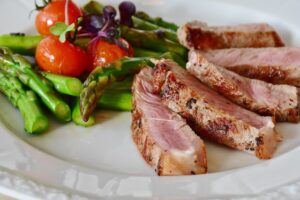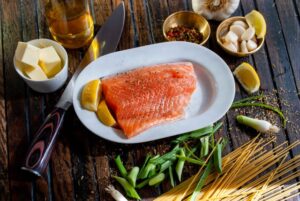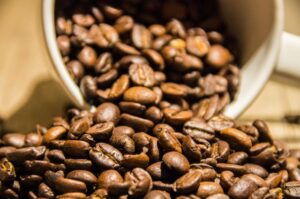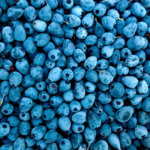A plant-based way of life has various advantages, yet in the event that you are a new vegan or vegetarian, it very well might be difficult to find good ways of supplanting the protein you are accustomed to getting from meat. Regardless of whether this diet is routine for you, there are most certainly a few food varieties that pack even more a nutritious punch rather than others.
Protein makes up around 17% of your body weight, and is expected for our muscles, including the heart and brain, it also assists with making the antibodies that battle contaminations. It also regulates glucose and help with energy work.
Our bodies make a few amino acids all alone, yet there are nine that must be taken in through our eating regimens. These fundamental amino acids assist with building the protein inside us that we really want. Meats and eggs have enough of these to be viewed as full proteins, yet plants are generally missing some or have levels that are excessively low, so they are incomplete proteins. All in all, how would you compensate for any shortfall?
Instead of being a pasta-tarian, look at these protein sources to give you the energy and supplements you really want to endure the day.
1. Grains
Buckwheat
Buckwheat is a pseudo-cereal, and a plant-based protein. It tastes really nutty and is regularly cooked like oats, or ground up into a flour for baking. Do you like soba noodles? Those are buckwheat. Only one cup of cooked buckwheat snatches you 6 grams of protein, notwithstanding phosphorus, manganese, magnesium, iron, and copper.
Brown and Wild Rice
These two grains are frequently lumped together, however they are very divergent in surface, taste and even make-up. Both, in any case, will give you satisfactory protein, around 4 grams for each cup. They additionally contain a lot of fiber. You can involve them as a side dish, or in a sautéed food to shake things up.
Amaranth
This crunchy grain can be made into a porridge, utilized as a side dish, or even put in servings of mixed greens. Like buckwheat, frequently it is ground into a flour for baking. One cup of cooked amaranth gives you 9 grams of protein, in addition to iron, magnesium phosphorus and manganese, which has been demonstrated to safeguard mind wellbeing.
2. Nuts and Seeds
Peanut Butter
Peanuts and peanut butter are classics sources with regards to protein-stuffed, plant-based dietary decisions. Two tablespoons of peanut butter will get you 7 grams of protein, and you can eat it right from the container. You can add peanut butter to an assortment of food varieties, including smoothies, curries, sweet and flavorful sauces, and baked goods.
Quinoa
Frequently considered a grain, quinoa is really a seed, and it is one of only a handful of exceptional plant-based food varieties that contains every one of the 22 amino acids, making it a complete protein. While one cup of red, dark, white or blended quinoa will give you 8 grams of protein, the way that the protein is finished makes it a strong option in contrast to carbohydrates like couscous or rice. Quinoa doesn’t develop from grasses, making it a gluten-free pseudo-cereal, containing more iron, zinc, fiber and magnesium than most grains. You can utilize quinoa instead of those different grains in many recipes without seeing any grave distinctions in taste, or boil it as a porridge.
Chia Seeds
Ch-ch-ch-chia! These little round seeds have a ton of protein. Just two tablespoons gives you 4 grams, plus omega-3s, calcium, magnesium, selenium and iron. At the point when they assimilate fluid, they structure a gel, and that implies they are extraordinary for puddings and jams.
HempSeeds
They’re called seeds, yet in fact they are nuts, and the white meat inside is really nutritious. Known as hemp hearts, this meat is a protein that additionally contains omega-3 and omega-6 fats. Only three tablespoons of the stuff will furnish you with 10 grams of protein, notwithstanding supplements like potassium, magnesium, zinc and 15 percent of your everyday iron prerequisite. To eat them, simply sprinkle them over servings of mixed greens, or add them to yogurt or smoothies for a somewhat nutty enhancing.
3. Vegetables and Fruits
Beans
Beans are probably the best food out there, and with regards to protein, they are an expert. A half cup of a bean gets you 6 to 9 grams of protein, notwithstanding a great deal of fiber which will assist with keeping you fuller for longer. Beans also assist with keeping cholesterol levels low. Also, assuming that you need much more, go for lentils – they have 12 grams of protein for every half cup. You can put these into soups, or salads, stews, tacos, or puree them and use them as a sauce thickener, also.
Peas
Peas might not suit your taste but they are very good for your body. You can place them in plates of salads, make them into a soup, dish or saute them with onions and flavors, and only one cup of these little guys give you 8 grams of protein.
Brussel Sprouts
Brussel sprouts are maybe one of the least popular vegetables out there, yet cooked the correct way, or cut up and steamed, they can add a kick to any dinner, also a sprinkle of much-required protein. A cup of cooked fledglings will get you 4 grams of protein.
Avocado
You realize this generous natural product is an incredible wellspring of solid fats however did you realize it likewise has a lot of protein? One portion of an avocado gets you 2 grams of protein, and fills you up simultaneously. You can eat it in cuts with lemon squeeze and sugar(just a little bit alright?), or pound it up into a guacamole or fixing for chips or pita cuts. We as a whole know at this point that you can eat it on toast, but at the same time it’s great diced in a mid year salad. Yum.
Takeaways
You don’t have to count every gram, but vegans or vegetarians feeling weak, lightheaded, or exhausted could be too falling short on their protein levels. Attempt to fit a protein into each meal to limit those side effects and furthermore so you don’t get hungry not long after you eat, which can occur with such a large number of sugars and carbs without that balancing protein factor. Assuming side effects proceed, converse with a doctor to ensure you are addressing your body’s necessities.










